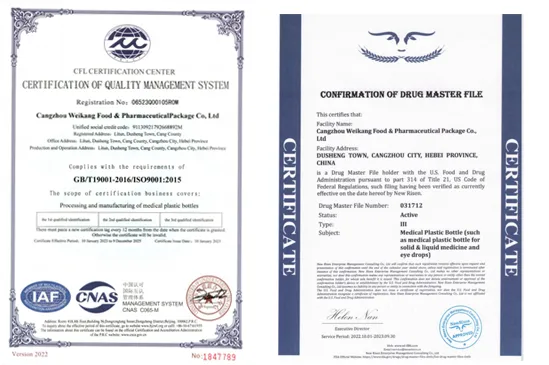reagent bottle in chemistry
The Role of Reagent Bottles in Chemistry
In the world of chemistry, precision, safety, and organization are paramount. Reagent bottles serve an essential function in laboratories, acting as the storage containers for various chemicals, solutions, and reagents used in experiments. Understanding the significance of these bottles, their types, materials, and best practices for use and storage can enhance the efficiency of research and laboratory practices.
Types of Reagent Bottles
Reagent bottles come in various shapes and sizes, each designed for specific functions. The most common types include
1. Glass Reagent Bottles These are the traditional containers used for storing chemicals. Glass is inert, meaning it does not react with most substances, making it an ideal material for storing a wide variety of reagents. However, glass bottles are fragile and can break if not handled properly.
2. Plastic Reagent Bottles Made from materials such as polyethylene or polypropylene, these bottles are lightweight and resistant to breakage. They are commonly used for storing solvents and acids, as certain plastics can withstand chemical reactions that would damage glass.
3. Amber Bottles Some chemicals, especially those sensitive to light, are stored in amber-colored glass bottles. The dark hue protects the contents from photodegradation, helping to maintain their stability over time.
4. Dropping Bottles These specialized bottles have a dropper mechanism that allows for precise dispensing of liquids. They are particularly useful in titrations and when only small amounts of a reagent are needed.
5. Reagent Reservoirs Larger containers designed for easy pouring and dispensing of reagents in bulk. These are often found in larger laboratories where certain chemicals are frequently used.
Materials and Their Implications
reagent bottle in chemistry

The choice of material for reagent bottles greatly influences the storage conditions and lifespan of the chemicals inside. Glass is suitable for storing strong acids and bases, volatile solvents, and other reactive substances. On the other hand, certain plastics are preferred for solvents that might degrade glass or where breakage is a concern.
It’s essential to label these bottles clearly. Permanent markers or label makers are commonly used to indicate the name of the chemical, concentration, date of receipt, and date of disposal. This practice is vital for safety and efficiency, especially in environments where multiple people may handle the same reagents.
Best Practices for Storage and Use
1. Proper Sealing After using a reagent, ensure that the bottle is sealed correctly. Many reagents can evaporate or degrade when exposed to air, humidity, or light.
2. Storage Conditions Chemicals should be stored according to their specific requirements. Some need to be kept at cool temperatures away from sunlight, while others might require refrigeration. Always consult the Material Safety Data Sheet (MSDS) for specific storage instructions.
3. Avoid Contamination Always use clean instruments when dispensing reagents. Avoid returning unused chemicals back into the reagent bottle to prevent contamination.
4. Regular Inventory Checks Conduct regular checks on the inventory of reagent bottles to ensure that they are not expired or contaminated. Disposing of outdated chemicals properly is crucial for maintaining a safe laboratory environment.
5. Safety Considerations When working with hazardous reagents, ensure that safety protocols are followed, including wearing appropriate personal protective equipment (PPE) such as gloves, goggles, and lab coats.
Conclusion
Reagent bottles are more than just containers; they are integral components in the practice of chemistry. The proper selection, storage, and handling of these bottles can significantly affect the outcome of experiments and laboratory operations. As chemistry continues to evolve, so too does the importance of adhering to best practices in the use of reagent bottles. By understanding their roles, chemists can ensure safer and more effective research environments, paving the way for groundbreaking discoveries and innovations in the field.
-
Aesthetic Makeup Spray Bottles | Fine Mist Empty RefillableNewsAug.19,2025
-
White Plastic Veterinary Vaccine Vials | Lab Liquid BottlesNewsAug.18,2025
-
Plastic Medicine Liquid Bottle: Secure Flip Top Drug VialsNewsAug.17,2025
-
Durable 250ml Blue Plastic Vaccine Vial for Lab & Vet UseNewsAug.16,2025
-
Sterile Virus Sample Tubes: Secure & Reliable Specimen CollectionNewsAug.15,2025
-
White 250ml Plastic Vaccine Vial for Lab & Vet MedicineNewsAug.14,2025
























